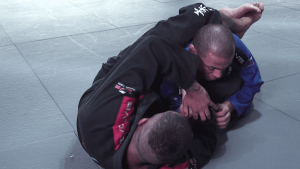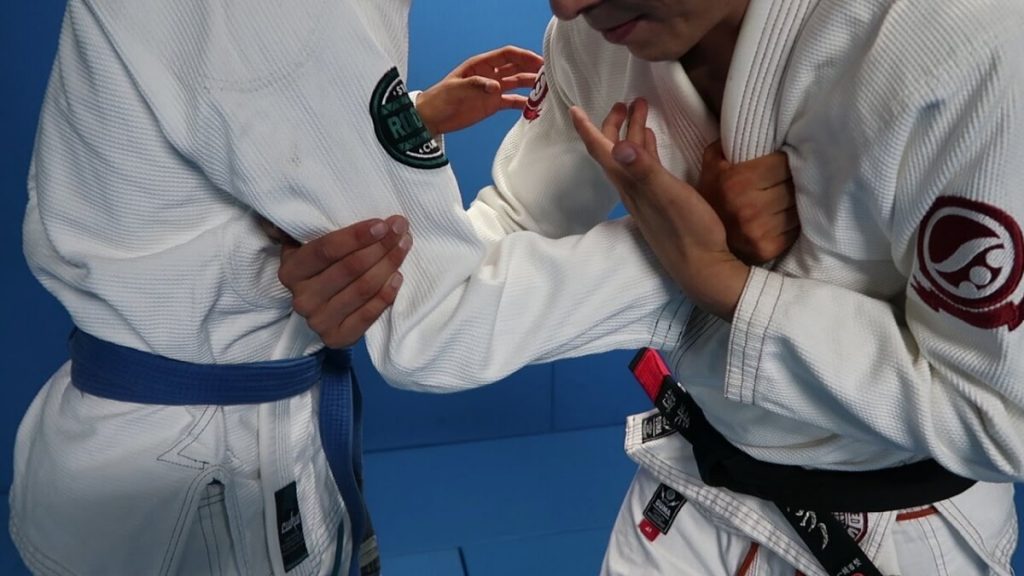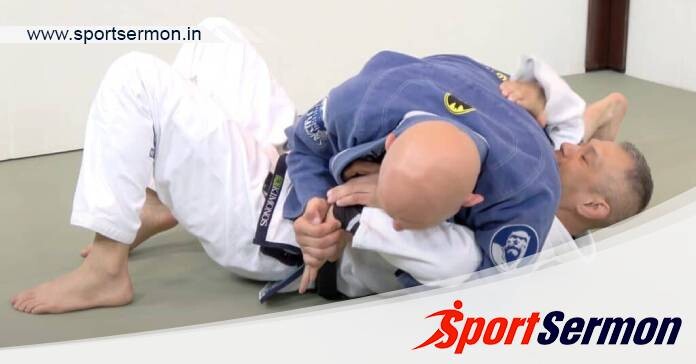Wrist Control In BJJ: Brazilian Jiu-Jitsu is a combat style that places a focus on grappling, ground fighting, and submission grips. It’s a difficult, demanding sport that needs not only physical prowess but also deft skill and strategic thought. Wrist control is one of the core BJJ concepts that novices sometimes miss while being essential to success. This article will examine the significance of wrist control in BJJ, as well as its uses, methods, and tactical benefits.
Understanding Wrist Control
When an opponent’s wrist or hand is under control, it makes it harder for them to move, attack, or protect. It’s a subtle yet effective weapon that can be applied in a variety of BJJ match situations and positions.
You might also be interested in reading this: A Complete Guide On Double Guard Pull-In BJJ
The Importance of Wrist Control

Wrist control may appear insignificant or even pointless to those who are unfamiliar with wrestling. This couldn’t be further from the truth! Wrist control provides a lot of significant advantages. Here are a few reasons why you ought to practise wrist control right now.
- Control And Dominance: You may restrict your opponent’s options and direct their motions by controlling their wrist. With this control, you may enforce your strategy and put the opposition on the defensive. A variety of leaping submissions, including the soaring armbar and rolling kimura, are among those that can be limited by simply grasping the opponent’s wrist. Depending on your position in the competition, this also enables you to keep an eye on where the opponent intends to strike you.
- Setting Up Submissions: Using wrist control, you can get into a number of submission holds. By adjusting the arm’s position, you have more choices for armlocks, chokes, and other types of submission, such as the wrist. In a two-on-one situation, for example, you may move your opponent forward so you can attack with a triangle choke and wrestle-ups. Recognise that your grip greatly affects your ability to use submissions. To enhance your submission efforts, it is crucial to be aware of these subtleties.
- Defensive Strategy: Along with being a powerful striking move, wrist control is a crucial defence strategy. By keeping hold of an opponent’s wrist, you can stop them from creating their own grips. This limits their options because they are unable to attack successfully.
- Transitioning Between Positions: Last but not least, wrist control can help transitions between postures go more smoothly. It can assist you in making the transition from guard to mount or from side control to back control while retaining pressure and control. By securing their wrist, you may restrict their attacking movement, allowing you to shift to more advantageous positions. When the greatest in the world compete, you can be sure that they apply wrist control techniques first before changing positions.
Techniques And Applications
After talking about the advantages of wrist control, let’s go over the techniques. The most frequent wrist control variants that you commonly see in competition are listed below.
- Two-On-One Wrist Control: In this move, you control one of your opponent’s wrists with both of your hands. It’s a powerful form of control that may be applied to initiate arm drags, take the back, or initiate other submissions. Due of the limited possibilities for grasping, this manoeuvre is employed in various grappling sports but is most common in No-Gi Jiu-Jitsu.
- Cross-Wrist Control: In this technique, your right hand controls your opponent’s left wrist while their right-hand controls yours. It is frequently employed in guard positions to stop the adversary from establishing grips or posing. When playing the Gi, think of this as a version of the cross collar control where you hold the cross hand instead.
- Same-Side Wrist Control: Stopping an opponent from framing, making space, or launching a submission attack can be accomplished by controlling the wrist on the same side. It is typically used in conjunction with a side control or mount in the standup to maintain pressure and control.
- Wrist locks: Strictly speaking, this is a controlling grasp rather than a surrender. However, since the fundamental idea is essentially the same, we choose to put the wrist lock on this list. Wrist locks are a less prevalent form of assault than other submissions, yet they may still be powerful and unexpected. You may apply pressure to the joint, causing a fast tap, by controlling and moving the wrist.
Strategic Benefit

Wrist control gives you a tactical edge by enabling you to manage the match’s tempo and course. It’s a tool that calls for dexterity, timing, and a solid grasp of leverage. This is how it gives you a tactical advantage:
- Neutralizing Stronger Opponents: Wrist control is a wonderful equaliser against physically stronger opponents. It may be used to neutralise stronger opponents. Controlling the wrist enables you to ignore the benefits of strength and concentrate on technique and leverage.
- Openings: Wrist control opens up spaces for assaults and transitions. As a result of the opponent’s forced reaction, possibilities for submissions or positional improvements may present themselves.
- Energy Conservation: You can manage the match with good wrist control without expending a lot of energy. It allows you to exert pressure and keep control without having to use your physical power.
- Enhancing Other Techniques: Wrist control frequently functions as a supplemental tool that improves other procedures. Wrist control offers an added level of efficacy to your entire game, whether you’re setting up a sweep, earning a submission, or holding a dominant position.
A difficult and versatile talent in BJJ, wrist control may be applied both offensively and defensively. It’s a skill that demands finesse, accuracy, and careful thought. Regardless of your level of expertise, learning and using wrist control in your technique may help you perform better and have more success on the mat. A key component of BJJ is wrist control, which is used for everything from dominance and control to establishing submissions and shifting between positions.
By emphasising the value of wrist control, practitioners may create a more comprehensive and adaptable BJJ style that is equipped to handle a variety of obstacles and opponents. The beauty and complexity of this adored martial art are reflected in this delicate skill inside the art of grappling.

